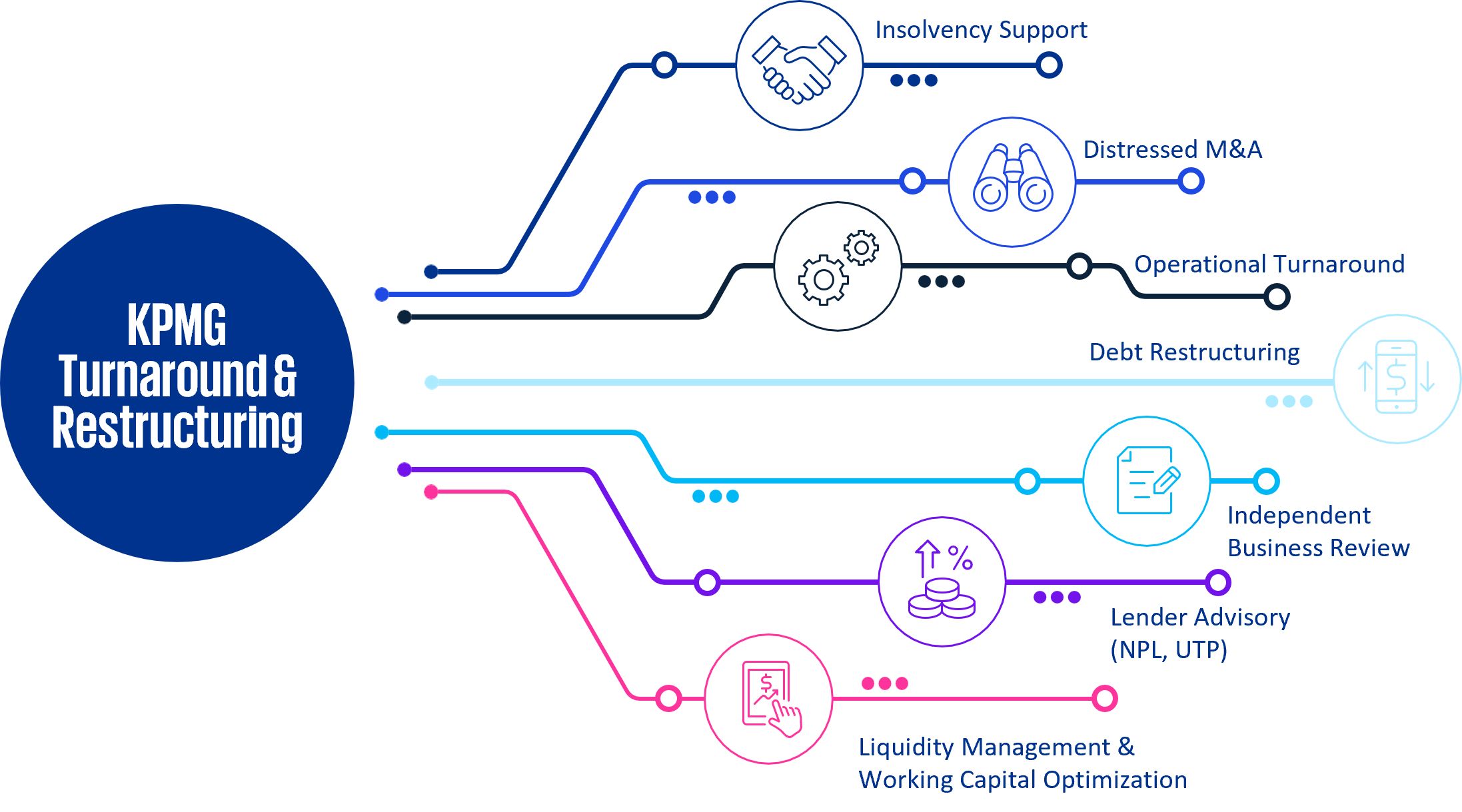We are pleased to share with you the fourth edition of our quarterly ĄÖÓć£ØLeyu£©ĢåÓż¹ŁĶų Financial Performance Index (FPI) publication. This publication provides insights into the changing state of corporate health across all companies listed and headquarter in Singapore across all sectors, following the end of the reporting season for the three months to December 2024. ĄÖÓć£ØLeyu£©ĢåÓż¹ŁĶų FPI data is refreshed on a quarterly basis. For more information, visit the ĄÖÓć£ØLeyu£©ĢåÓż¹ŁĶų FPI page.
Singapore FPI performance comparison
ĄÖÓć£ØLeyu£©ĢåÓż¹ŁĶų Financial Performance Index (ĄÖÓć£ØLeyu£©ĢåÓż¹ŁĶų FPI Singapore) analysed across:

Historic FPI movement of Singapore with respect to Asia and Global trends
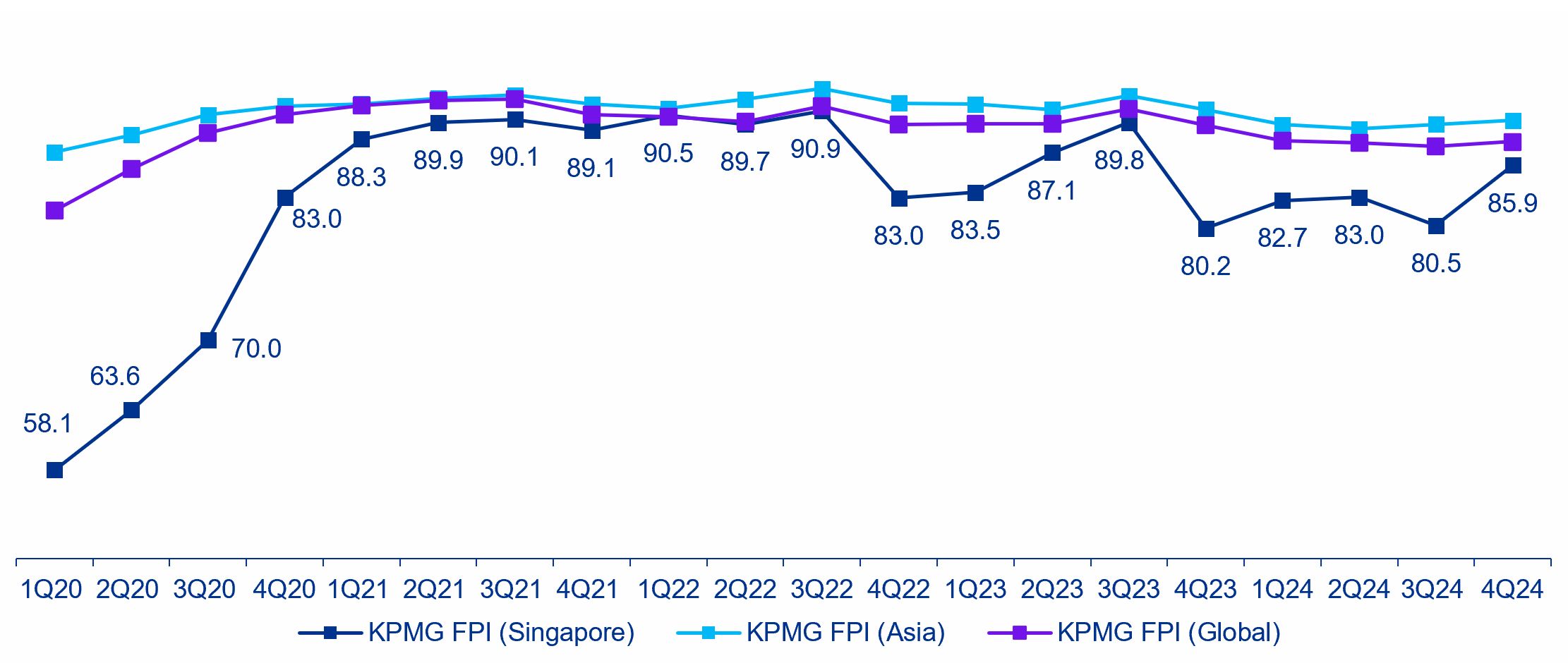
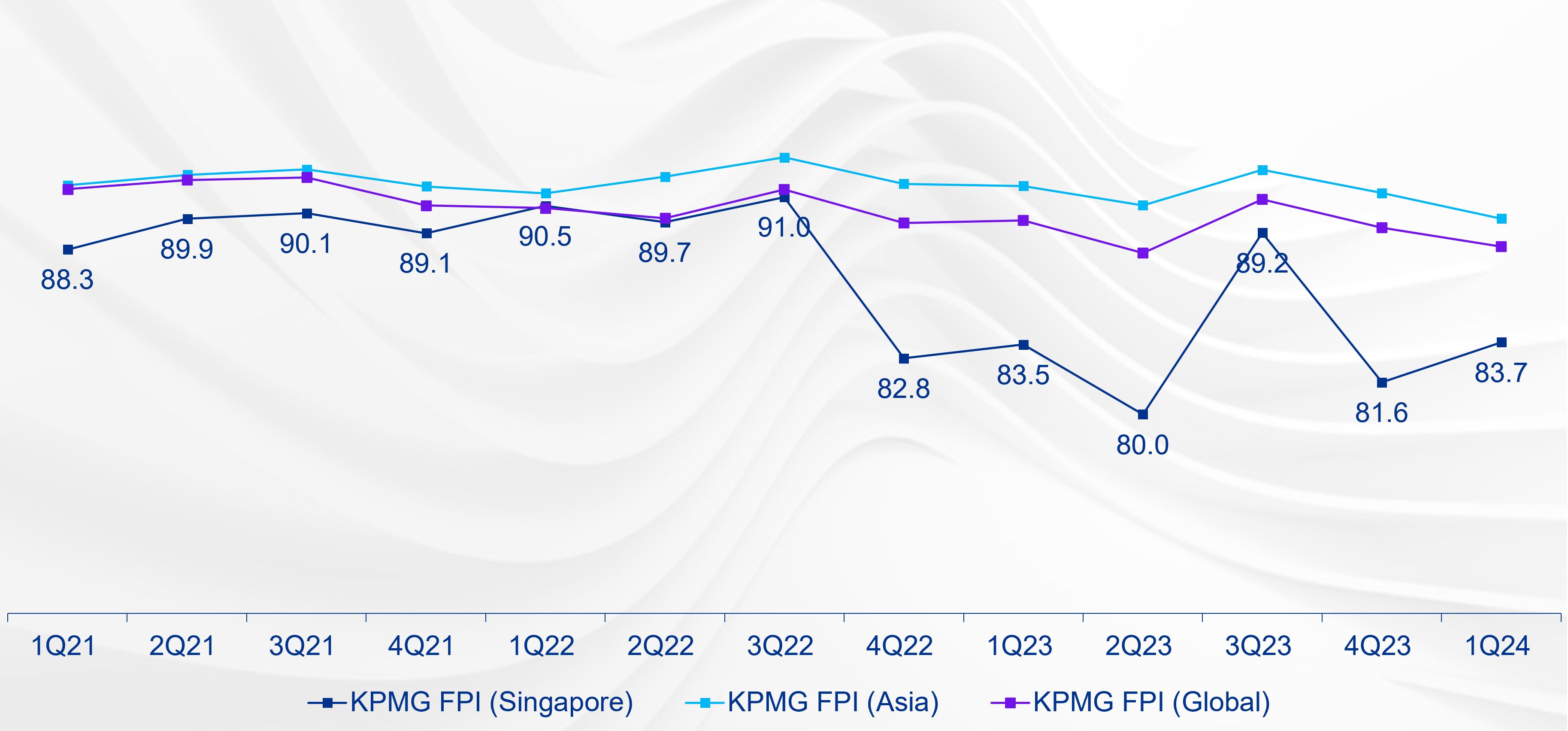
Historic FPI movement of Singapore with respect to India, Japan, China, Indonesia, and US
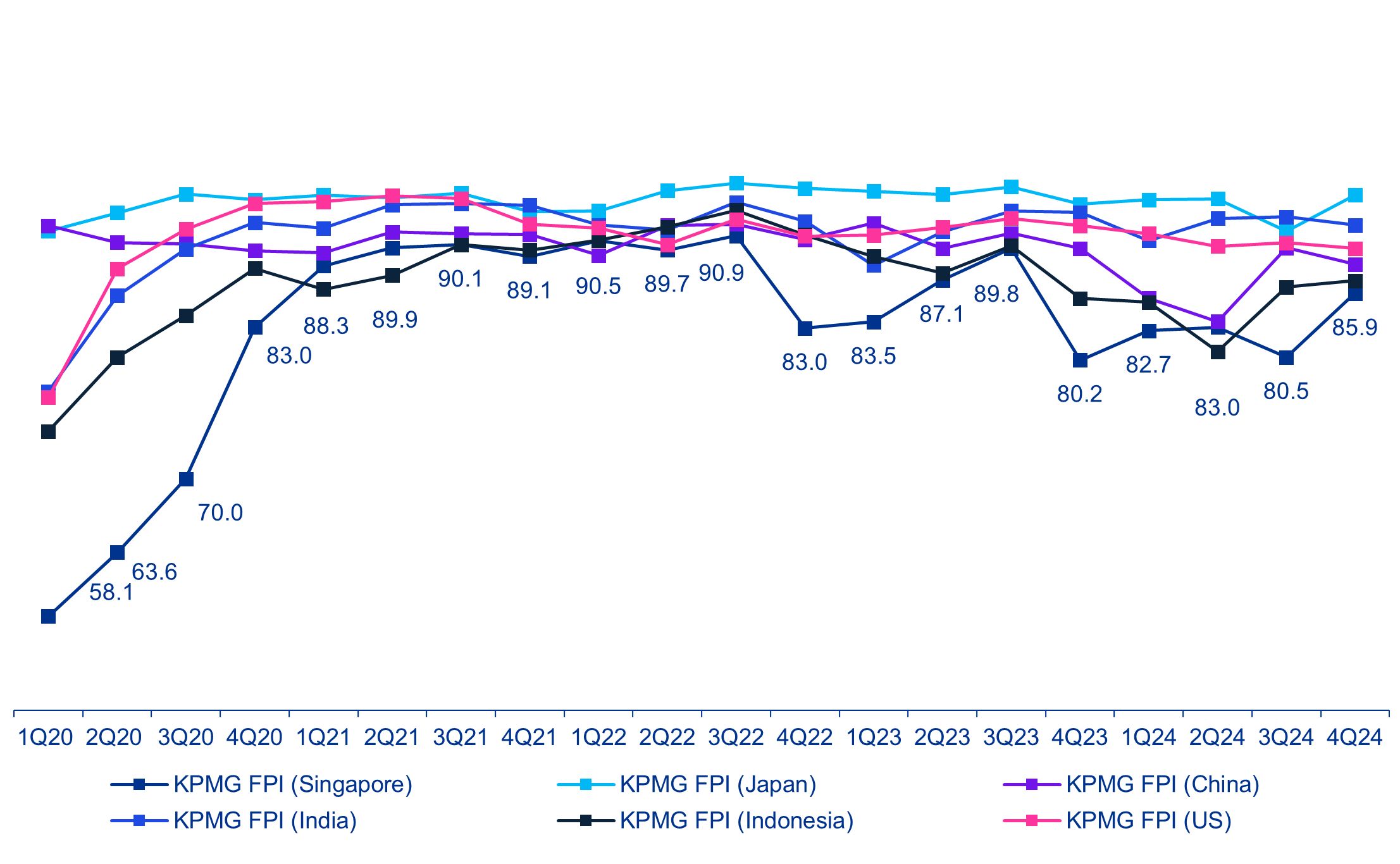

Sector movers
- As compared to the previous quarter, majority of the sectors have shown a positive growth trend in 4Q24. Out of this, the top performing sectors were Manufacturing that experienced a 41.6% rise, followed by Trading Companies and Distributors, and Healthcare, which registered a 38.0% and 20.6% respectively.
- The FPI score for the Manufacturing sector rose from 58.2 in 3Q24 to 82.4 in 4Q24, driven primarily by the Industrial Manufacturing sub-sector. Growth in electronics clusters of manufacturing sector and machinery was robust due to the global electronics cycle upturn. Despite expected increases in production costs due to trade frictions and geopolitical conflicts, the sector is projected to continue growing in 2025.
- Trading Companies and Distributors saw its FPI score increase from 50.6 in 3Q24 to 69.8 in 4Q24. Significant expansion in Singapore's wholesale trade, particularly in machinery, equipment, and supplies, was driven by strong sales of electronic components and telecommunications & computer products. Retail encountered growth headwinds, stemming from locals shifting their spending overseas, but a rebound is anticipated with the recovery in tourist spending.
- Healthcare sector showed tremendous recovery, with its FPI score rising from 74.3 in 3Q24 to 89.6 in 4Q24. Public health spending is expected to outpace private health spending with a CAGR of 6.2% from 2025 to 2029.
- Further, sectors including Business Services and Technology and Telecommunication observed growth of 18.7% and 14.9%, respectively. A similar trend was seen among the associated sub-sectors such as Environmental and Facilities Services, Technology Distributors, and Electronics Instruments, Components and Manufacturing Services.
- Energy, Raw Materials and Natural Resources, and Travel and Hospitality sector witnessed prominent decline in FPI scores, dropping by 14.5%, 12.7% and 6.2% respectively from 3Q24 to 4Q24. On a yearly basis, Utilities, Consumer Markets and Energy sectors recorded major declines in FPI scores, dropping by 24.9%, 18.4% and 17.5% respectively from 4Q23 to 4Q24 (Y-o-Y).
- In 4Q24, the Energy sector experienced the steepest decline, with the FPI score dropping from 81.2 in 3Q24 to 75.4, marking a 14.5% decrease. Over the entire year, the sector showed signs of distress, with a 17.4% year-on-year decline. Singapore's electricity generation faced challenges due to its heavy reliance on imported natural gas, which saw high prices because of geopolitical tensions and supply chain disruptions. Additionally, the transition to cleaner energy sources required significant investments in new technologies and infrastructure, temporarily straining financial performance.
- Over the period, from 3Q24 to 4Q24, 28 sub-sectors witnessed growth, 18 sub-sectors witnessed negative growth and 1 stayed neutral. Out of the sub-sectors which witnessed negative growth, 7 sub-sectors reported FPI score below 85 points, and the remaining 11 sub-sectors has maintained an average FPI scores of around 93 points, indicating resilience in the Singapore market.
From September 2024 to December 2024
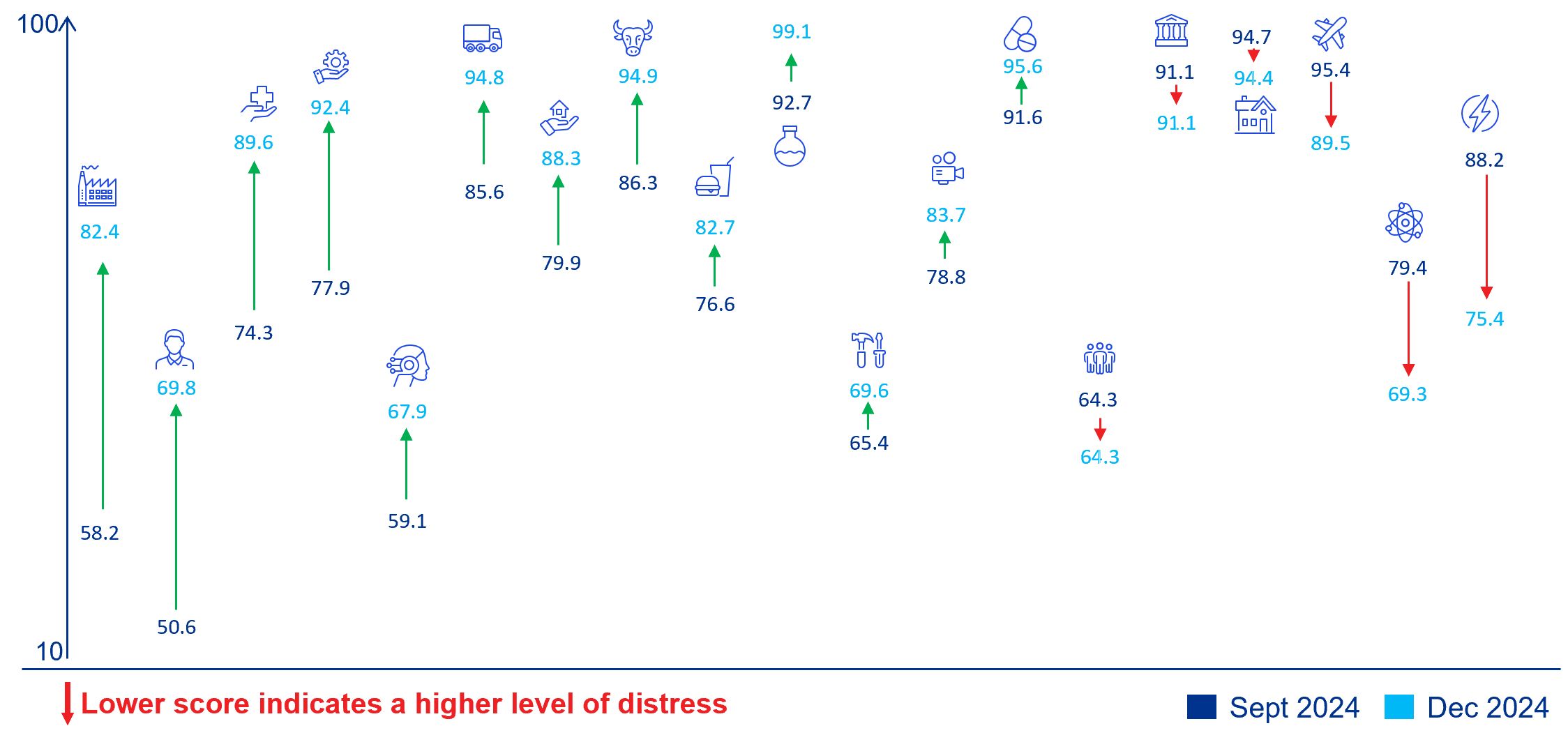
Strongest and weakest sector outperformers
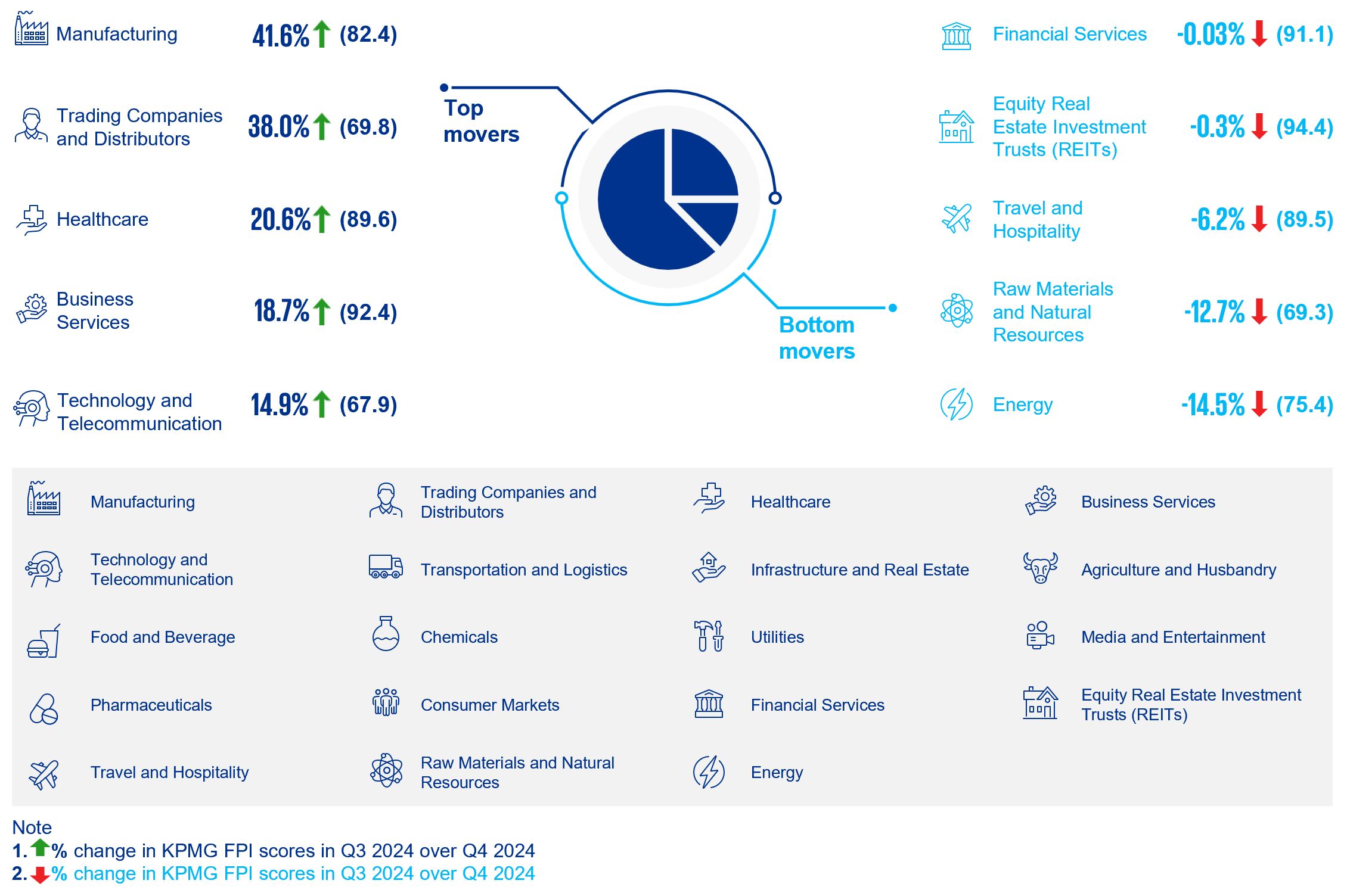
From September 2024 to December 2024
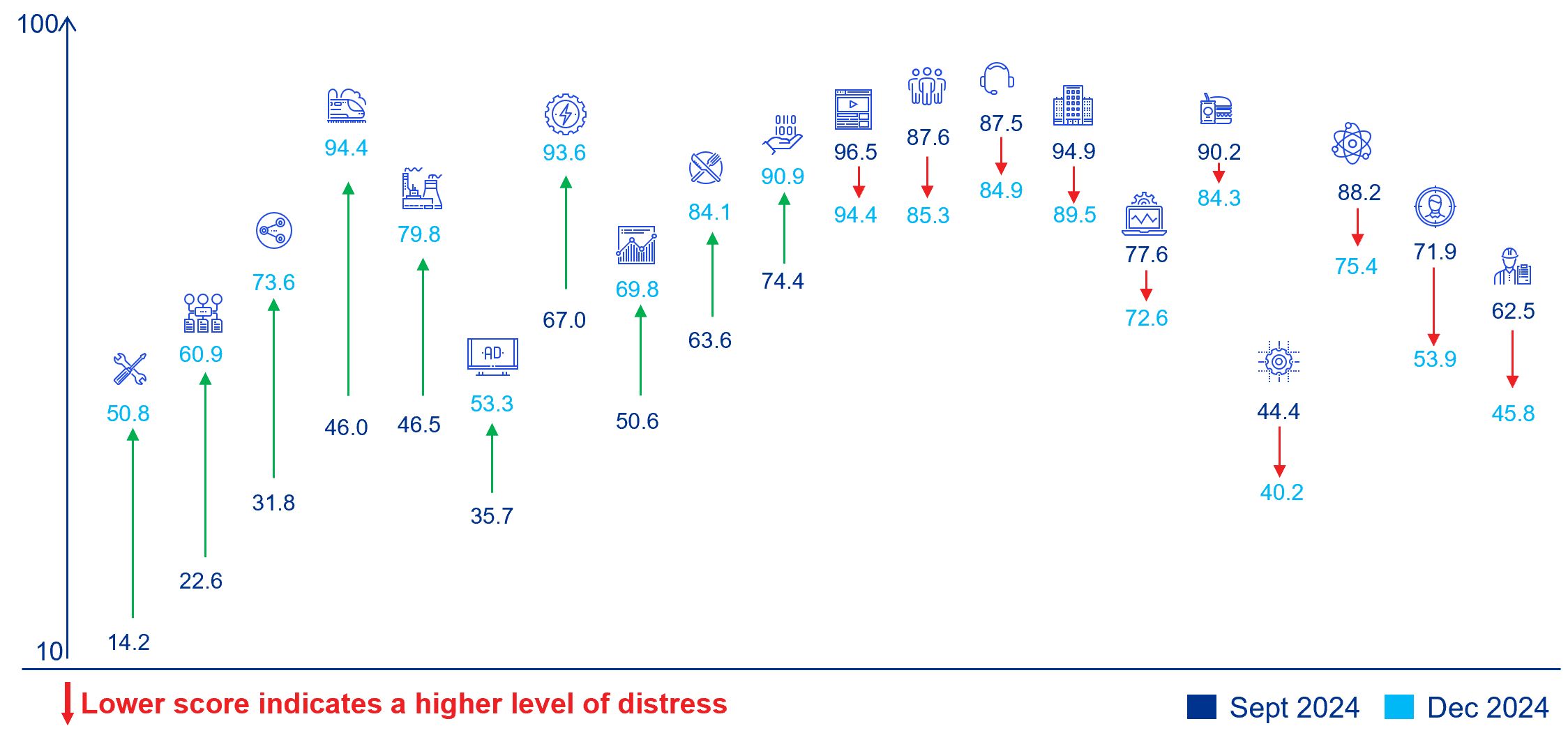
Strongest and weakest sub-sector outperformers
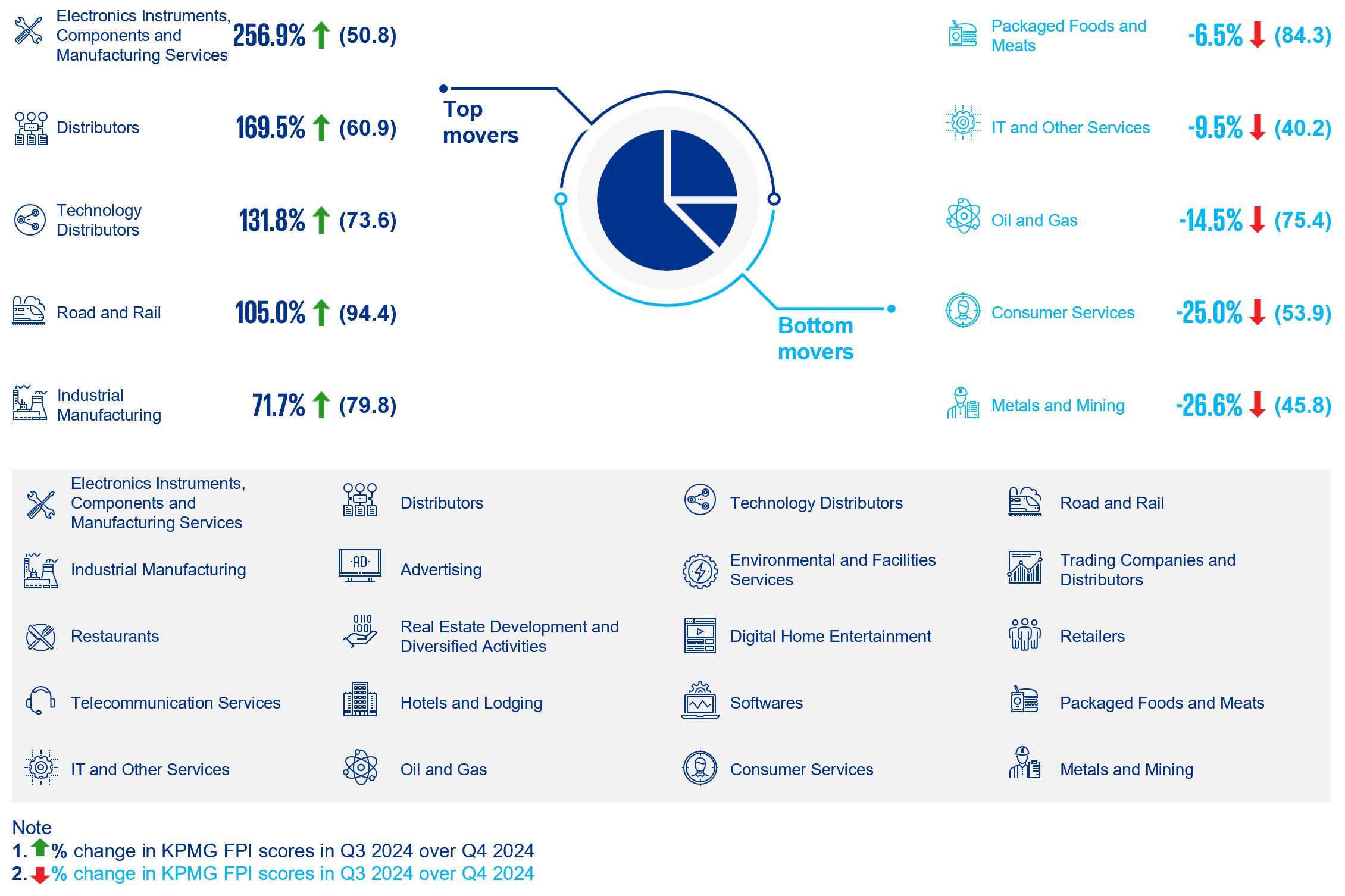
Singapore economy and landscape
- Reflecting on the robust economic performance in 4Q24, Singapore's GDP growth accelerated to 4.4% for the entirety of 2024, significantly outpacing the 1.8% expansion seen in 2023. This impressive growth trajectory was predominantly fueled by the wholesale trade, finance and insurance, and manufacturing sectors.
- Consumer market and retail sector encountered headwinds throughout 2024, as evidenced by the decline in FPI scores from 89.5 in 1Q24 to 85.3 in 4Q24. Additionally, household income decreased from approximately SGD178,800 in 2023 to approximately SGD140,177 in 2024, which likely contributed to the reduction in retail sales growth in Singapore, falling to -5.7% in 2024 from -4.2% in 2023.
- From the 4Q23 to 4Q24, the Food and Beverage sector's FPI scores decreased from 86.9 to 82.7, representing a 4.8% decline. This decline is primarily attributed to a marginal reduction in sales volumes across various segments: fast food outlets (-3.2%), cafƩs, food courts, and other eating places (-2.4%), and restaurants (-1.0%). Additionally, the F&B services volume index fell by 0.5% in 2024. During the year, food prices increased by 2.8%, driven by higher costs for services and non-cooked food items.
- Singapore's impressive surge in FPI scores, climbing from 80.5 in 3Q24 to 85.9 in 4Q24, has strategically positioned the nation ahead of its regional peers, including Malaysia, Thailand, and Hong Kong (SAR). This remarkable growth underscores Singapore's robust economic resilience and competitive edge in the region.
- Going forward, the GDP is projected to moderate to between 1 ā€� 3% in 2025. With inflation easing, import costs should remain manageable, amid stable global prices and gradual Singapore dollar appreciation. However, potential risks arise from the recently proposed US tariffs targeting ASEAN member states to prevent export diversion from China.
Zombies
- Zombies are defined as companies close to default (scoring 0 on the ĄÖÓć£ØLeyu£©ĢåÓż¹ŁĶų FPI) for three or more consecutive quarters. These businesses might already be facing challenges or implementing restructuring plans.
- In Asia, the count of zombies has grown each quarter, rising from 293 in 3Q24 to 347 in 4Q24. The leading sectors with the most significant shares of zombies are Infrastructure and Real Estate at 19.0%, followed by Technology and Telecommunications and Consumer Markets at 16.4% and 13.0% respectively.
- Singaporeā€™s count of zombies similarly increased from 18 to 21 in 4Q24. Sectors reporting zombies are Technology and Telecommunication (7), Consumer Markets (4), Media and Entertainment (2), Trading Companies and Distributors (2), Business Services (1), Energy (1), Healthcare (1), Manufacturing (1), Raw Materials and Natural Resources (1) and Travel and Hospitality (1).
Trends of Zombies in the ĄÖÓć£ØLeyu£©ĢåÓż¹ŁĶų FPI
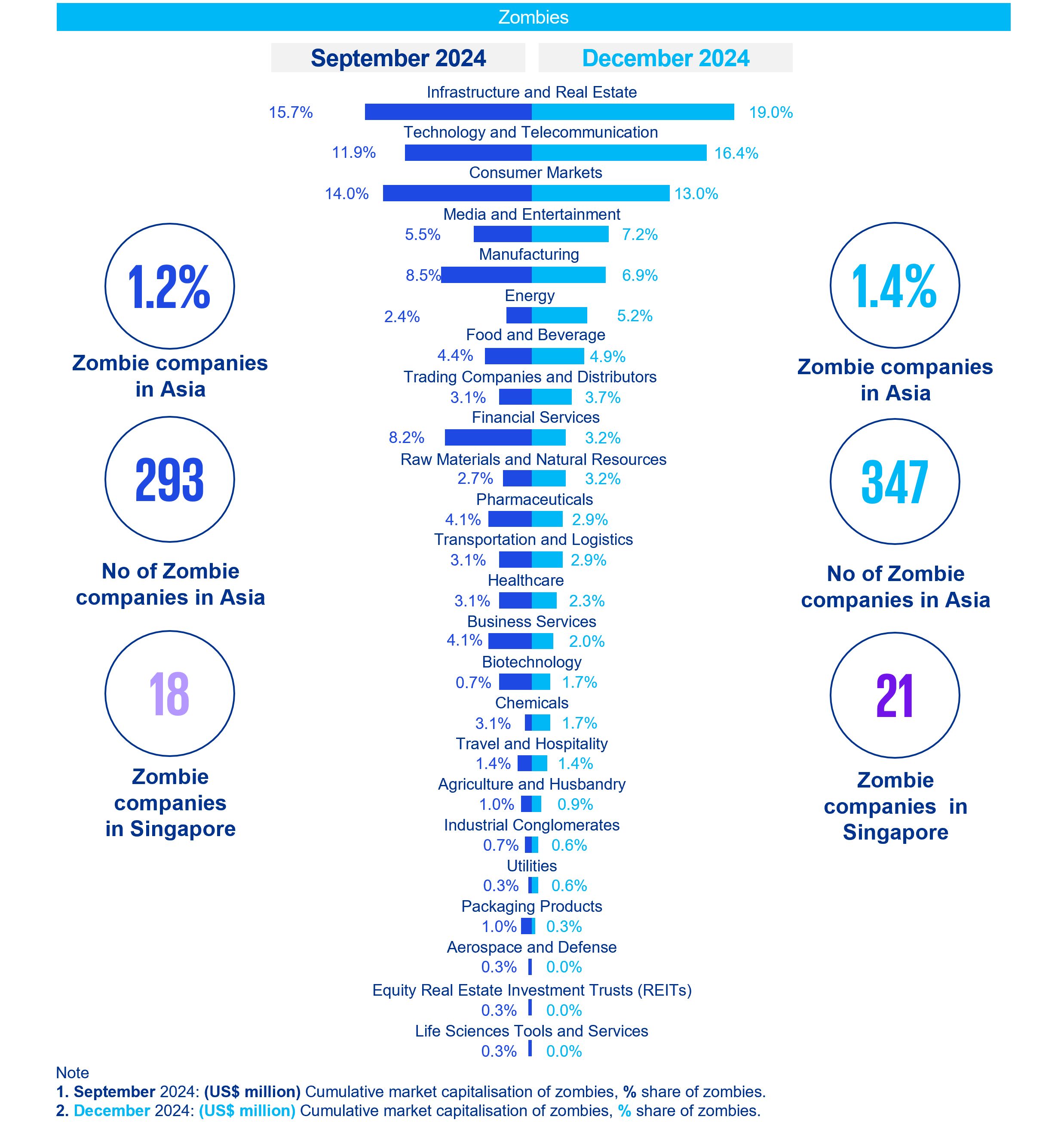
About ĄÖÓć£ØLeyu£©ĢåÓż¹ŁĶų FPI
The ĄÖÓć£ØLeyu£©ĢåÓż¹ŁĶų Financial Performance Index measures the financial health of individual companies. Based on an initial pool of more than 40,000 companies globally, ĄÖÓć£ØLeyu£©ĢåÓż¹ŁĶų FPI identifies those companies, sectors, regions, countries, and territories that are performing well and those that are underperforming. A higher score on the ĄÖÓć£ØLeyu£©ĢåÓż¹ŁĶų FPI represents strong performance.
The ĄÖÓć£ØLeyu£©ĢåÓż¹ŁĶų FPI model draws from the (developed by John Campbell, Jens Hilscher and Jan Szilagyi), which is based on eight explanatory variables encompassing financial and market variables, to arrive at the overall financial health of a company. The ĄÖÓć£ØLeyu£©ĢåÓż¹ŁĶų FPI is based on raw data from .
Global analysis
The global version of this tool is also .
How we can help
To understand your companyā€™s current index score, or to uncover deeper insights about specific markets or segments, contact us today. ĄÖÓć£ØLeyu£©ĢåÓż¹ŁĶųā€™s global network of professionals have the data, sector, and geographic expertise to help you understand your score and tie it back to your business needs. Whether it is benchmarking, identifying targets, comparing sectors, or looking for trends over time, ĄÖÓć£ØLeyu£©ĢåÓż¹ŁĶų professionals can connect you to the information you need to capitalise on your opportunities.
